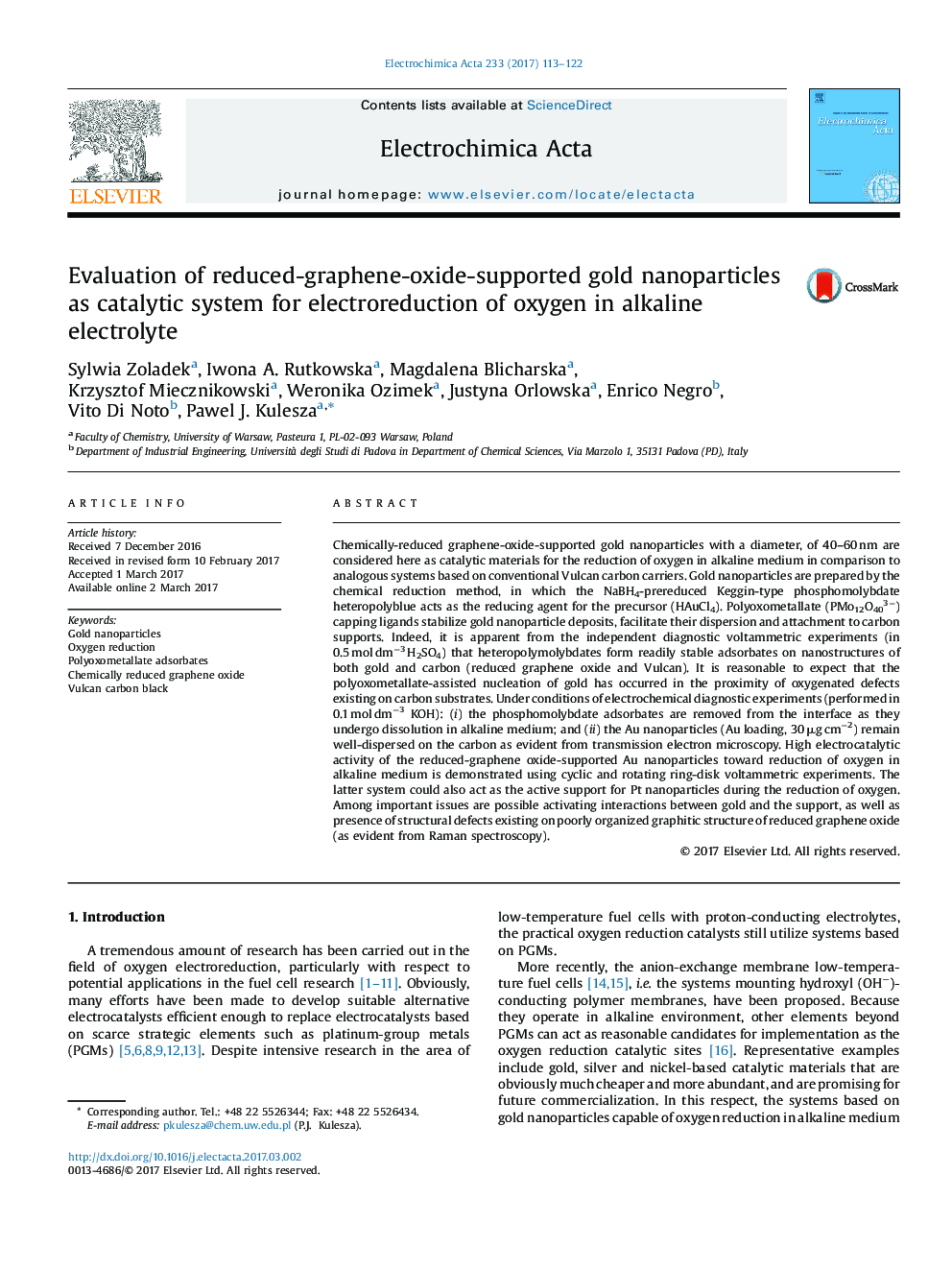| کد مقاله | کد نشریه | سال انتشار | مقاله انگلیسی | نسخه تمام متن |
|---|---|---|---|---|
| 6471436 | 1424124 | 2017 | 10 صفحه PDF | دانلود رایگان |
- Chemically-reduced graphene oxide is used as robust and active support for dispersed gold nanoparticles.
- Keggin-type polymolybdate adsorbates facilitate nucleation, stabilization and deposition of Au nanoparticles on reduced graphene oxide.
- The reduced graphene oxide supported gold nanoparticles exhibit high catalytic activity during electroreduction of oxygen in alkaline medium.
- Unique hydrophilic/hydrophobic properties and interfacial defects of reduced graphene oxide are ox importance here.
Chemically-reduced graphene-oxide-supported gold nanoparticles with a diameter, of 40-60 nm are considered here as catalytic materials for the reduction of oxygen in alkaline medium in comparison to analogous systems based on conventional Vulcan carbon carriers. Gold nanoparticles are prepared by the chemical reduction method, in which the NaBH4-prereduced Keggin-type phosphomolybdate heteropolyblue acts as the reducing agent for the precursor (HAuCl4). Polyoxometallate (PMo12O403â) capping ligands stabilize gold nanoparticle deposits, facilitate their dispersion and attachment to carbon supports. Indeed, it is apparent from the independent diagnostic voltammetric experiments (in 0.5 mol dmâ3âH2SO4) that heteropolymolybdates form readily stable adsorbates on nanostructures of both gold and carbon (reduced graphene oxide and Vulcan). It is reasonable to expect that the polyoxometallate-assisted nucleation of gold has occurred in the proximity of oxygenated defects existing on carbon substrates. Under conditions of electrochemical diagnostic experiments (performed in 0.1 mol dmâ3 KOH): (i) the phosphomolybdate adsorbates are removed from the interface as they undergo dissolution in alkaline medium; and (ii) the Au nanoparticles (Au loading, 30 μg cmâ2) remain well-dispersed on the carbon as evident from transmission electron microscopy. High electrocatalytic activity of the reduced-graphene oxide-supported Au nanoparticles toward reduction of oxygen in alkaline medium is demonstrated using cyclic and rotating ring-disk voltammetric experiments. The latter system could also act as the active support for Pt nanoparticles during the reduction of oxygen. Among important issues are possible activating interactions between gold and the support, as well as presence of structural defects existing on poorly organized graphitic structure of reduced graphene oxide (as evident from Raman spectroscopy).
Journal: Electrochimica Acta - Volume 233, 10 April 2017, Pages 113-122
